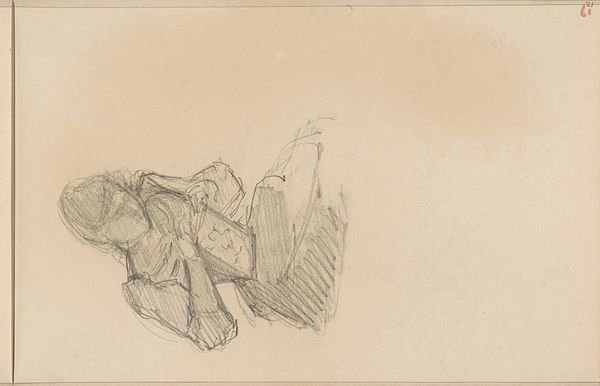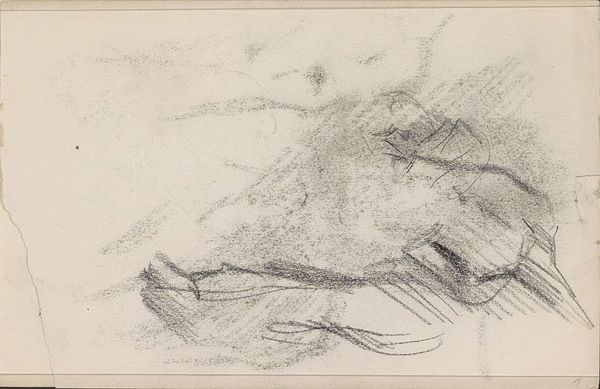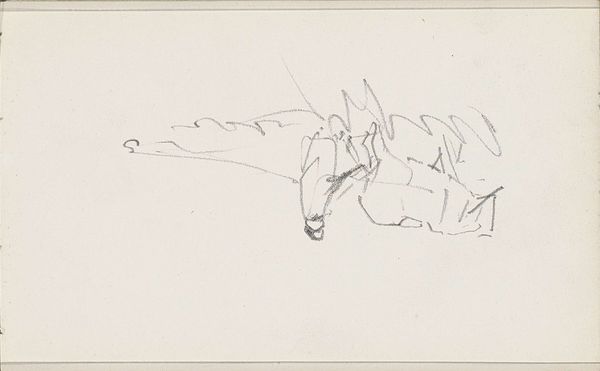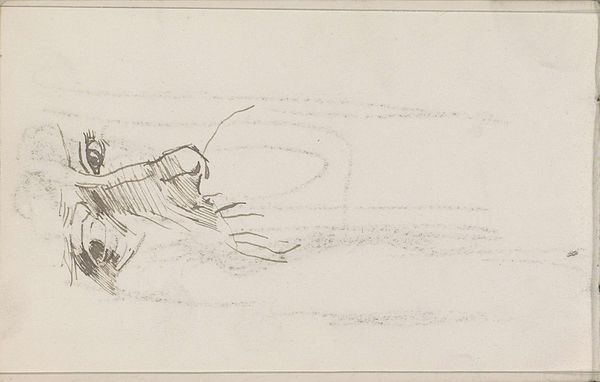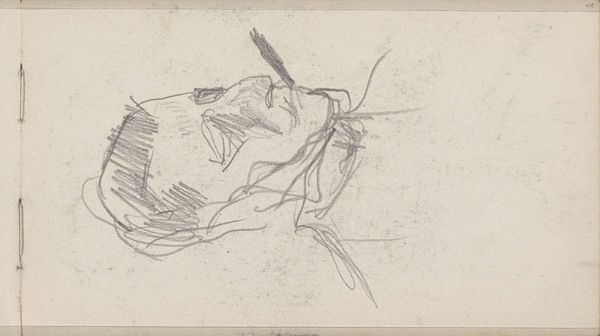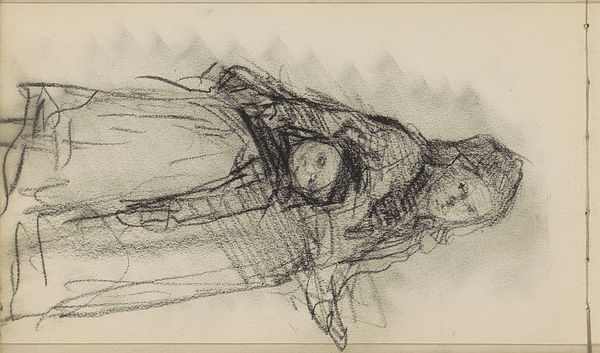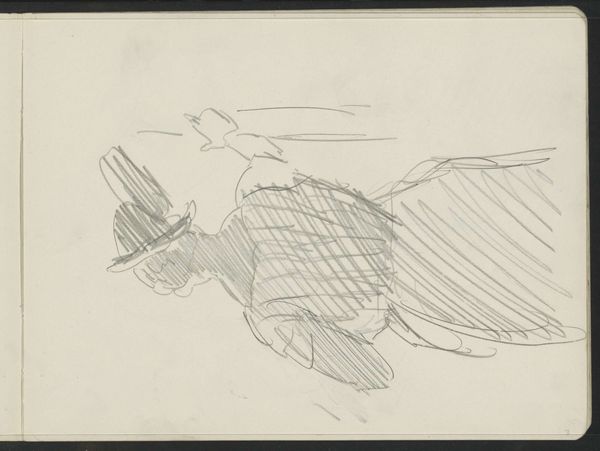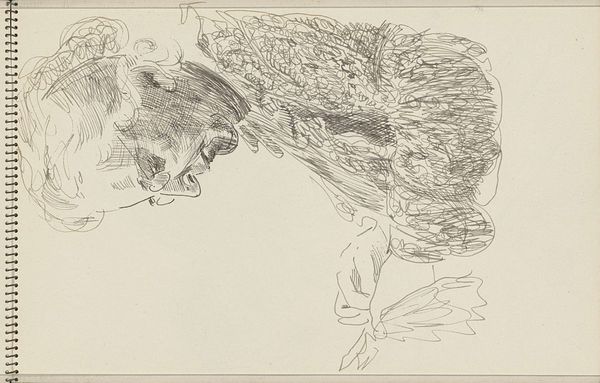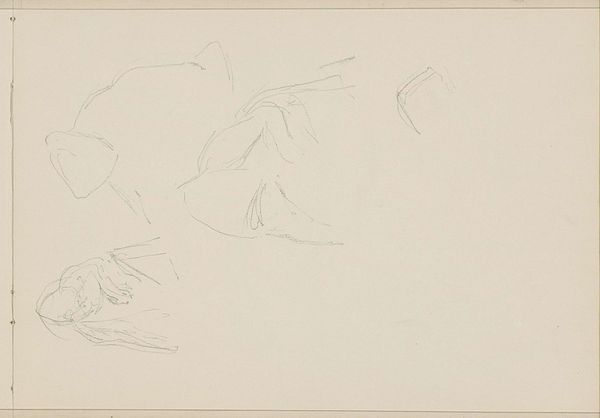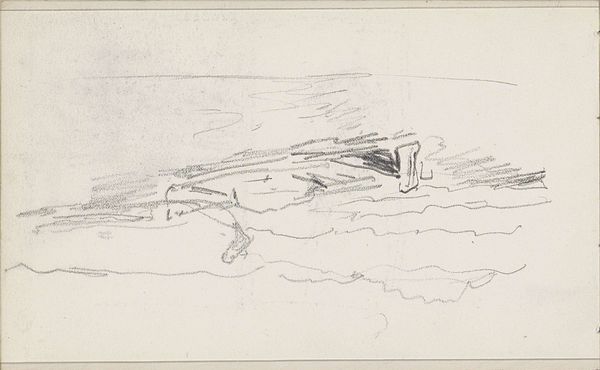
drawing, pen
#
drawing
#
pen sketch
#
pen
#
sketchbook art
Copyright: Rijks Museum: Open Domain
Curator: "Zittende Joanna Lion Cachet-Cordes," dating from about 1935 to 1940, a pen drawing by Carel Adolph Lion Cachet, currently held at the Rijksmuseum. Editor: There's an immediate starkness. It feels unfinished, or rather, purely about capturing a fleeting moment of form. The rawness of the line is compelling. Curator: Absolutely. Note how Cachet utilizes line, both contour and cross-hatching, to define volume. The eye is heavily worked and defined by rapid looping and circling lines while a more orthogonal network captures the material and planes of the body. Editor: What strikes me is the potential relationship between this piece and mass reproduction of images. A sketch like this may be quick, gestural, but its very existence hinges on accessible materials: pen and paper produced on an industrial scale, not to mention ready markets. What does that say about our subject and artistic inspiration? Curator: The material considerations frame access to artistic creation and prompt ideas surrounding value. However, by stripping away the embellishments of color or detail, Cachet has isolated the raw structure of the figure. He offers us a profound study of shape. We also must read across other works to understand these pen strokes as elements of style, such as those found in bookplates or prints. Editor: Indeed. Yet I'd wager Cachet's easy access to affordable sketching implements liberated him from high art's traditional constraints and maybe fueled experimentation of style. Pen and readily available paper became a means for artists to observe society at large. It's almost documentary, would you not say? Curator: There is some merit to your argument and Cachet likely knew his patron well enough that constraints might have been few. But the image itself still transcends the material circumstance and serves as its own internal world; its significance as a symbolic representation of its subject, rests on its visual presence, in my opinion. Editor: Fair enough, perhaps that access merely shifted focus onto new, and wider networks of commerce that were now more readily available. Curator: Thank you for those reflections on material access and context! I will carry those insights into my next encounter with Cachet's practice.
Comments
No comments
Be the first to comment and join the conversation on the ultimate creative platform.

